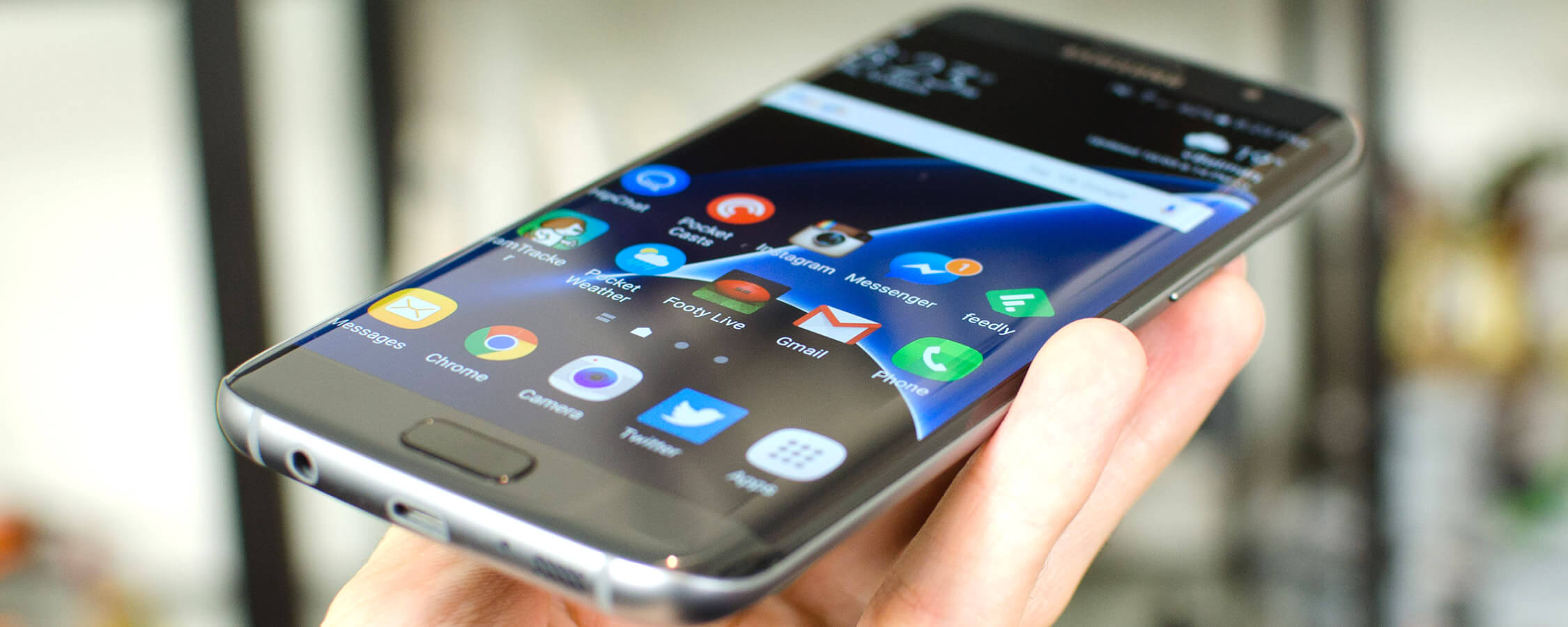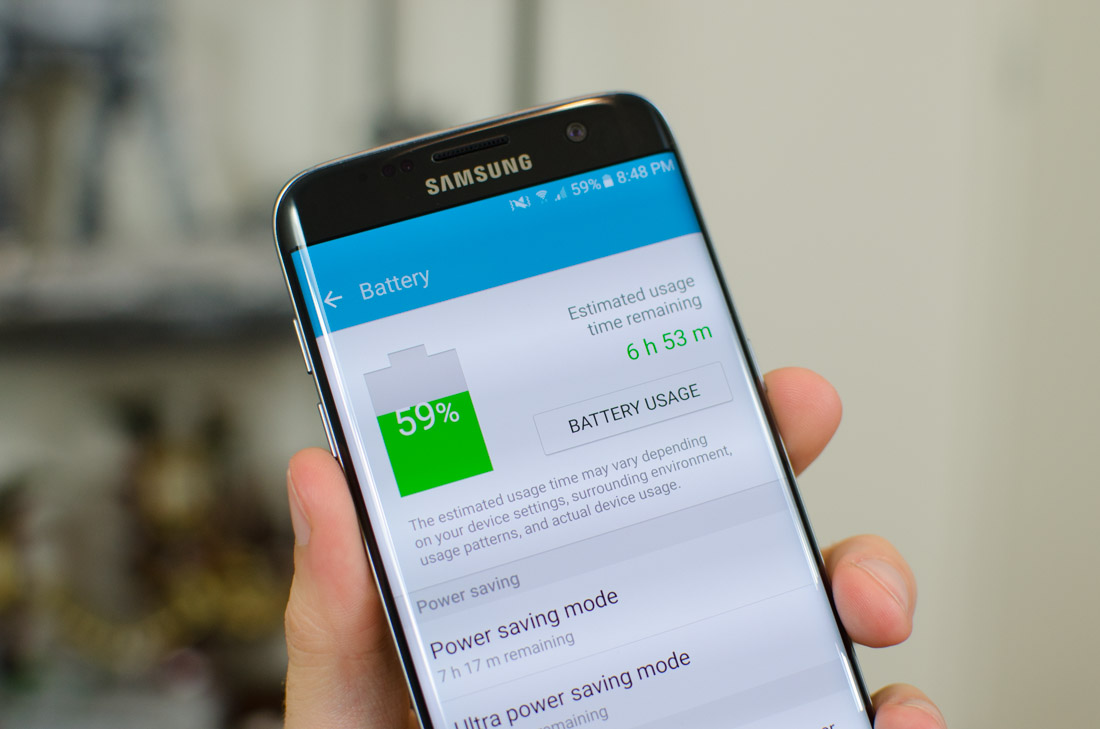Battery Life
The Galaxy S7 Edge features a 13.86 Wh (3,600 mAh at 3.85 V) non-removable battery, which is a significant increase on the Galaxy S6 Edge's 10.0 Wh (2,600 mAh) cell. We're also seeing a larger battery than the Galaxy Note 5 (11.55 Wh, 3,000 mAh) and the Galaxy S6 Active (13.48 Wh, 3,500 mAh), making it one of the largest batteries included with a Samsung phone in recent years.
The S7 Edge supports fast wired and wireless charging on both the Snapdragon and Exynos models. Wireless charging supports both the Qi (WPC) and PMA standards, so it should work with a wide range of existing charging solutions. The Edge should also be compatible with most wired chargers as it uses micro-USB rather than USB Type-C.
With the power efficiency improvements in the Exynos 8890 as well as the larger battery, the S7 Edge has fantastic battery life. Let's take a look at the benchmarks
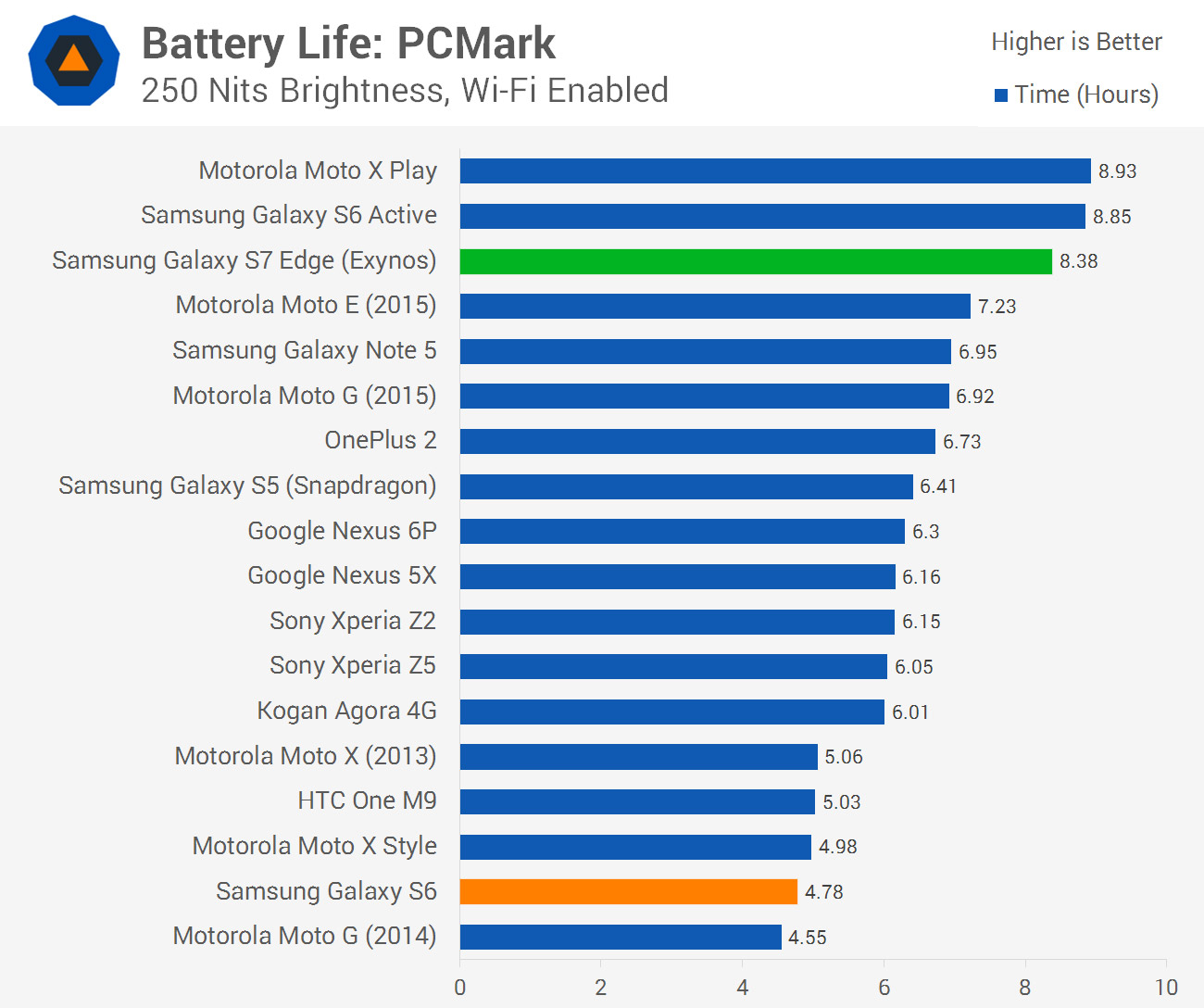
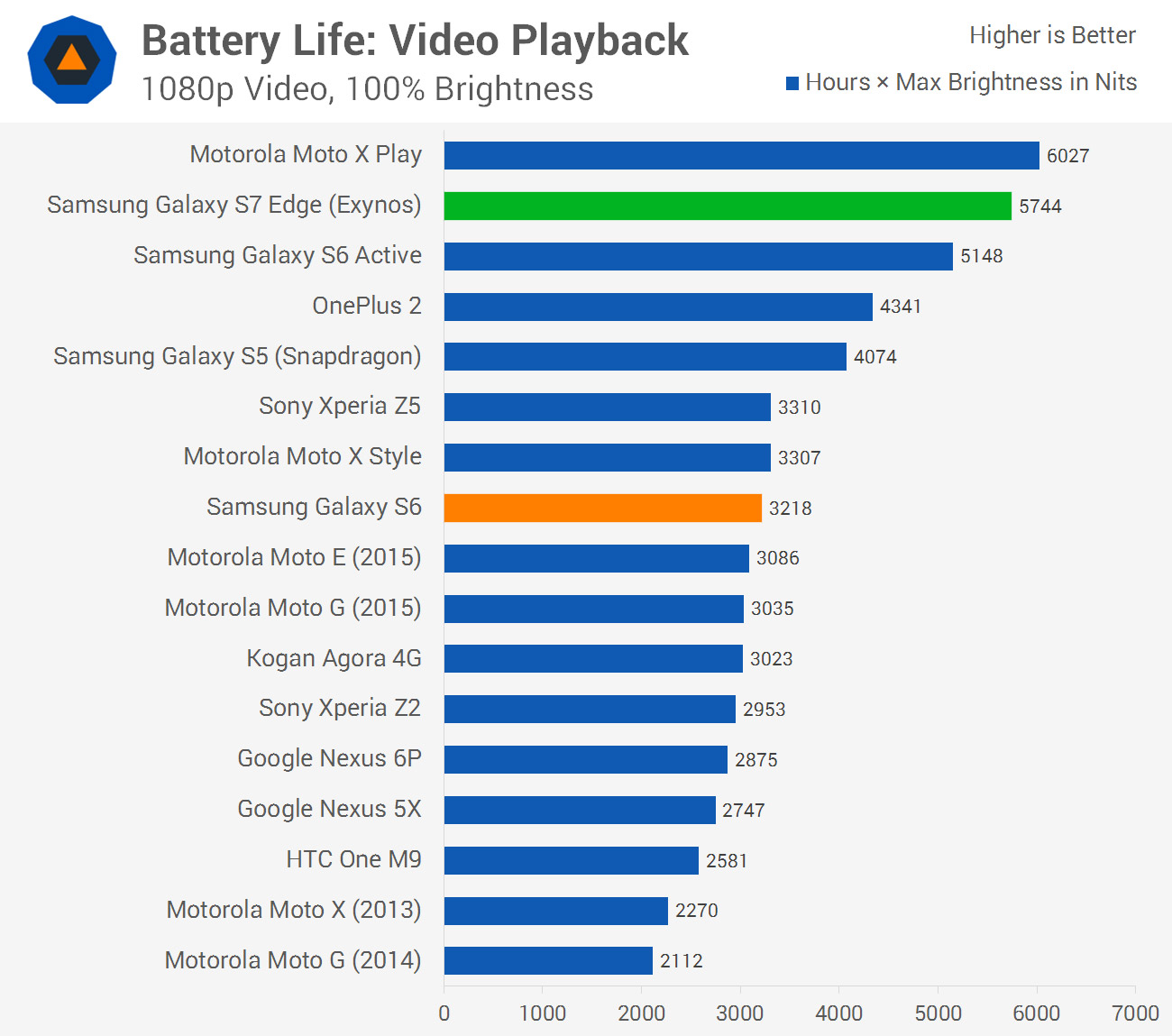
In PCMark we have the chance to compare the Galaxy S7 Edge to Samsung's most recent handsets. Compared to the Galaxy S6, the S7 Edge delivers 75% better battery life, which is a great result considering the battery is 41% larger, and the display 16.3% larger (which negatively affects battery life). In real world usage this is a huge difference that results in many more hours of screen on time.
The S7 Edge also surpasses the Galaxy Note 5 by a healthy margin of 21%, helped by a 20% larger battery and a 7% smaller display. However, it falls behind the S6 Active, with the Active recording 6% better life from a 3% smaller battery and 14% smaller display.
While this isn't a direct apples-to-apples comparison, to me this suggests that the vast majority of the Galaxy S7 Edge's gains come from simply having a larger battery. The Exynos 8890 appears to be very similar in terms of power consumption relative to the Exynos 7420, at least in this benchmark, which isn't a bad result considering the 8890 is more powerful.
It's also interesting to note that the S7 Edge annihilates some similarly-sized Snapdragon 810-powered devices. The S7 Edge beats the 5.5-inch OnePlus 2 by a margin of 25% with a 9% larger battery and a higher-resolution display. It bests the Nexus 6P as well by 33% with a 4% larger battery and a 7% smaller display.
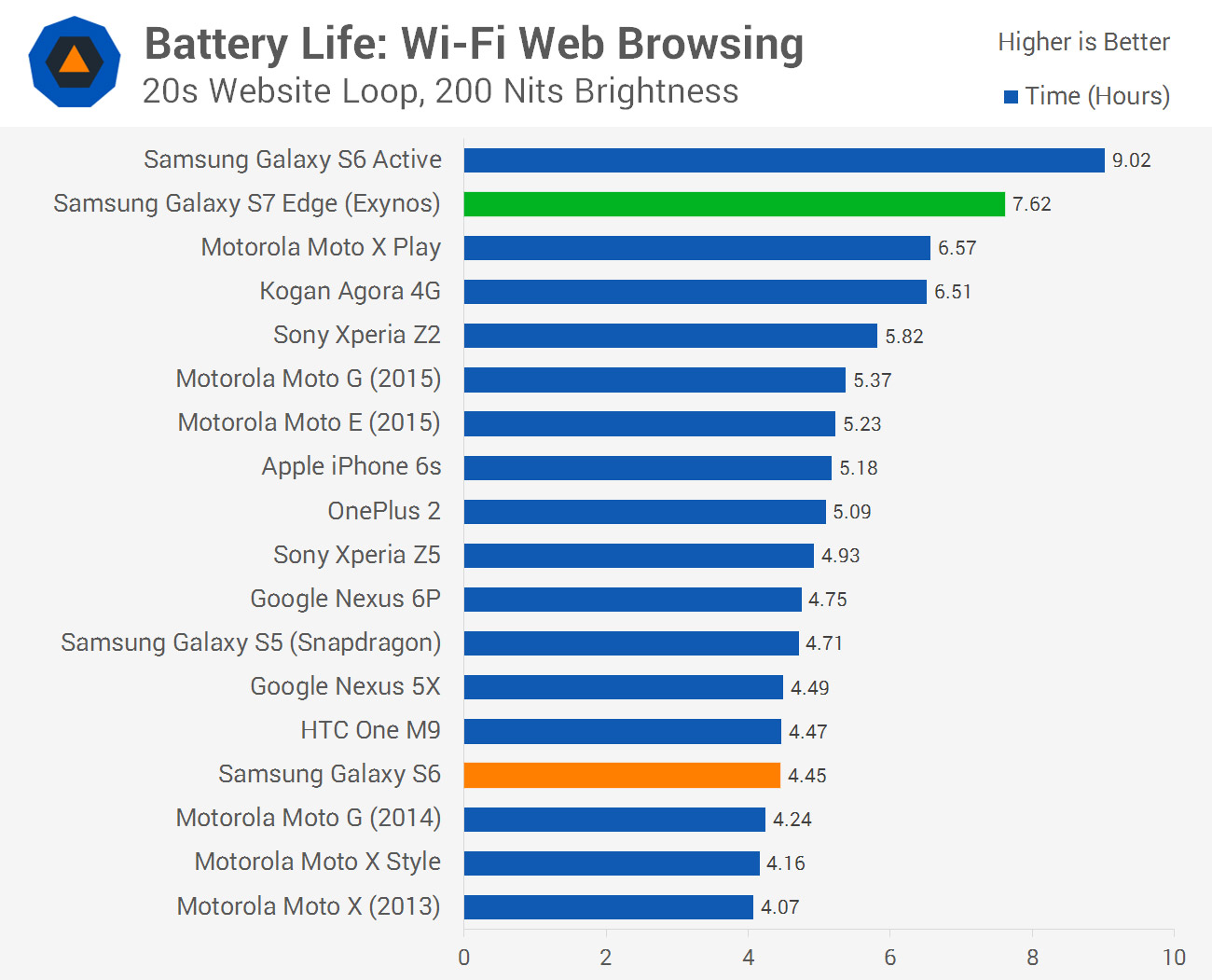
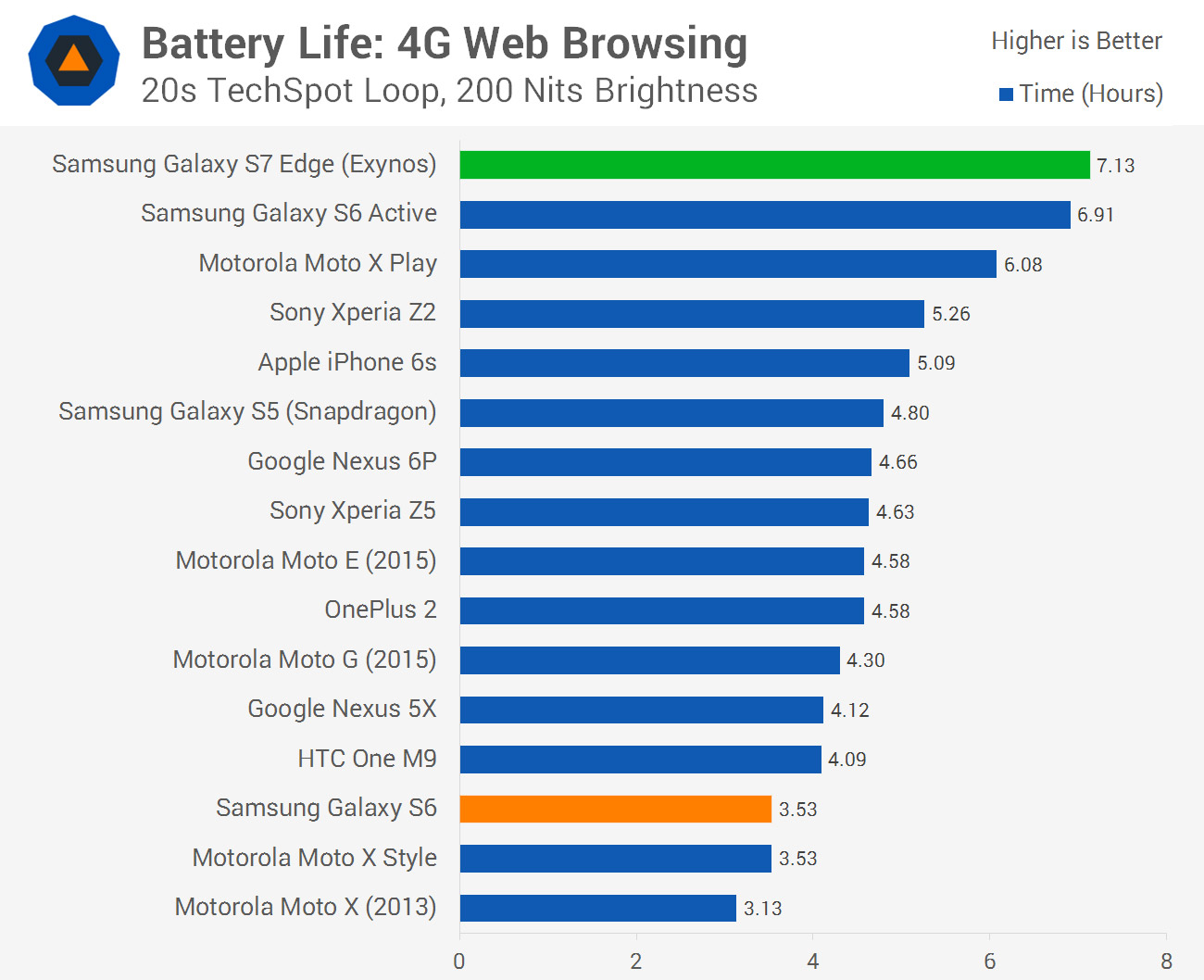
Great results all-round for the S7 Edge in our browsing tests. It posts 71% better life than the Galaxy S6 in Wi-Fi browsing, and only falls behind the S6 Active of all devices I've reviewed.
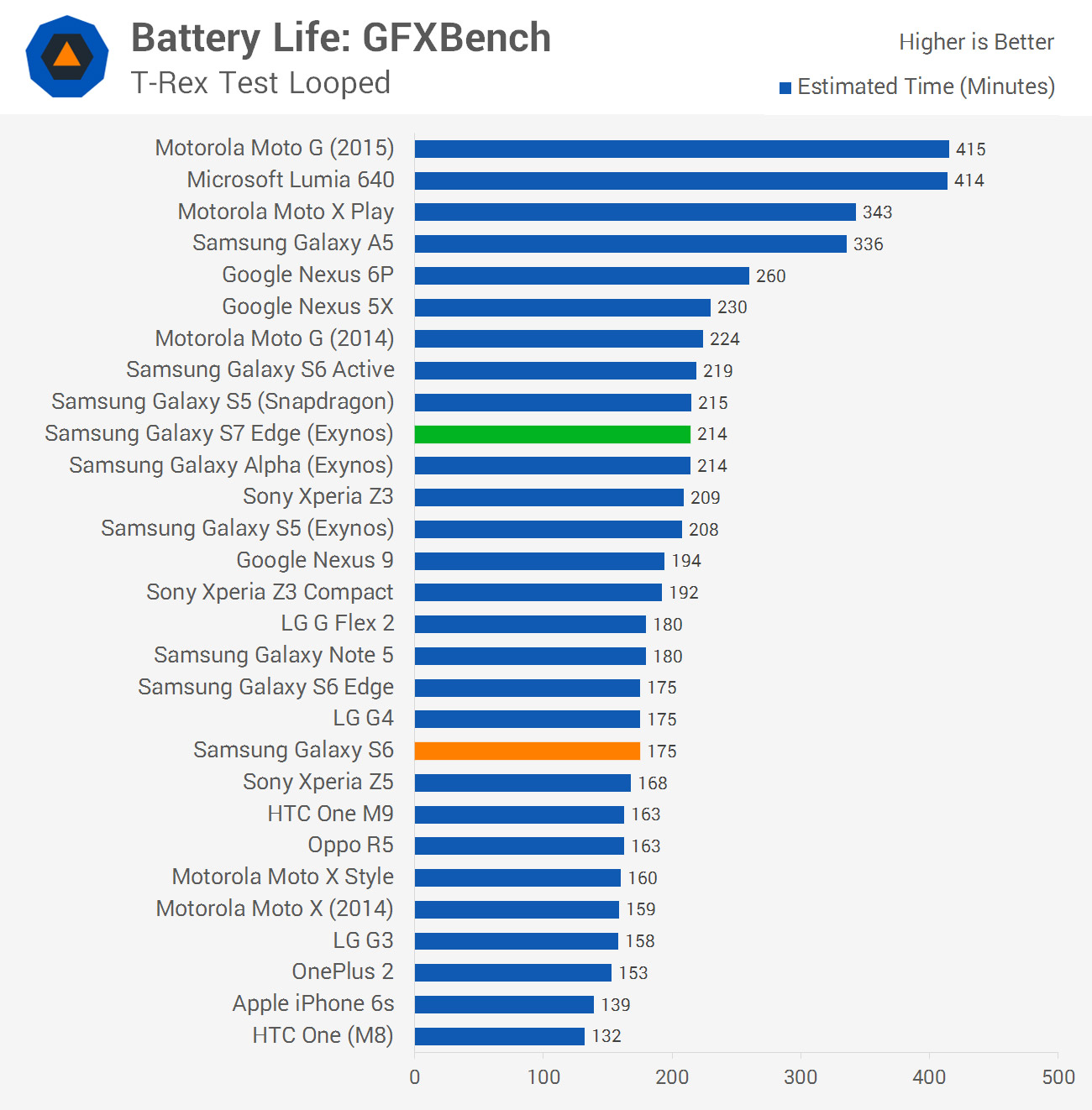
Decent results here for GFXBench, as this test is limited by GPU power consumption. We're seeing a similar result to the Galaxy S6 Active, which packs a similar battery size, yet the Mali-T880MP12 is around 40% more powerful and throttles faster.
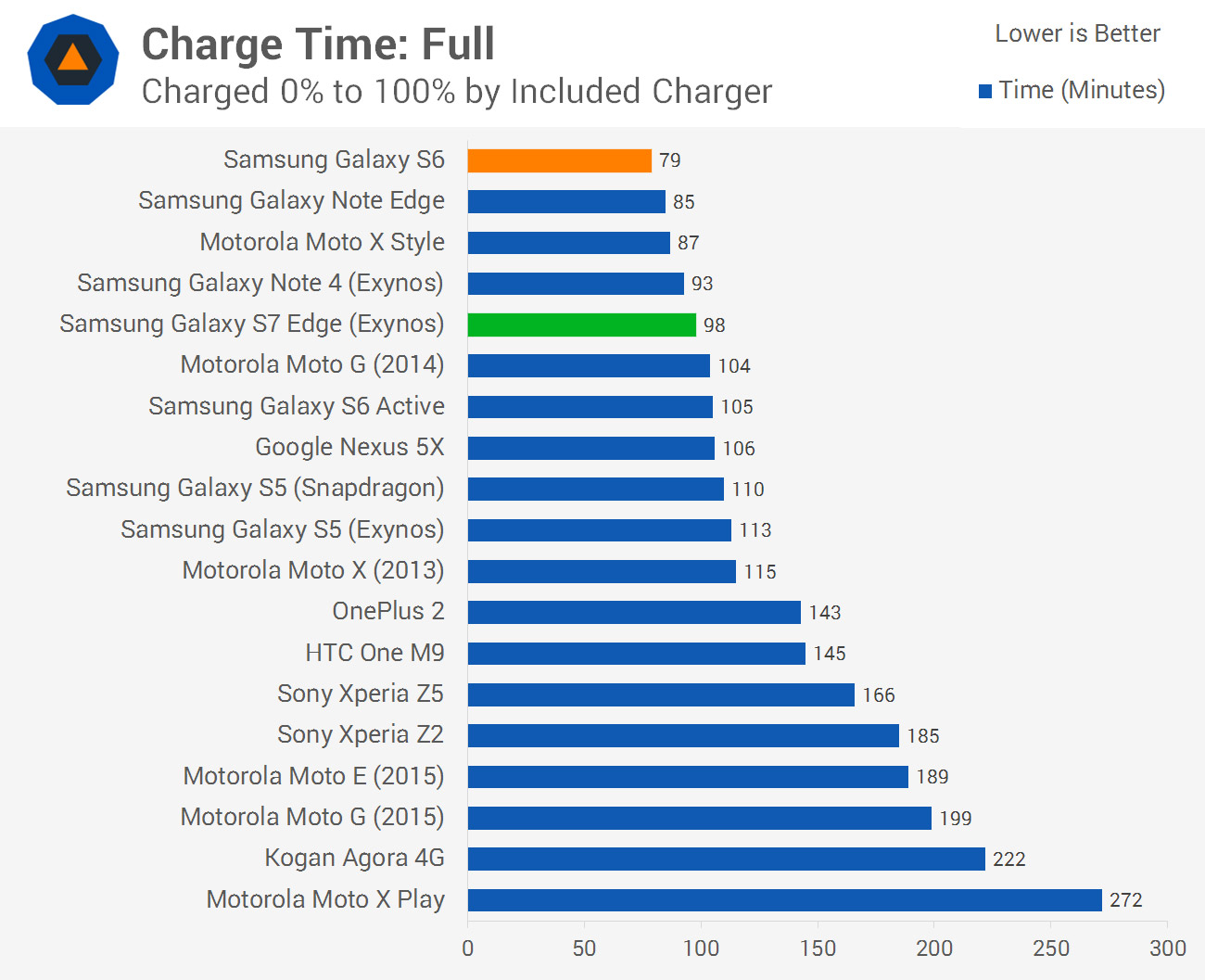
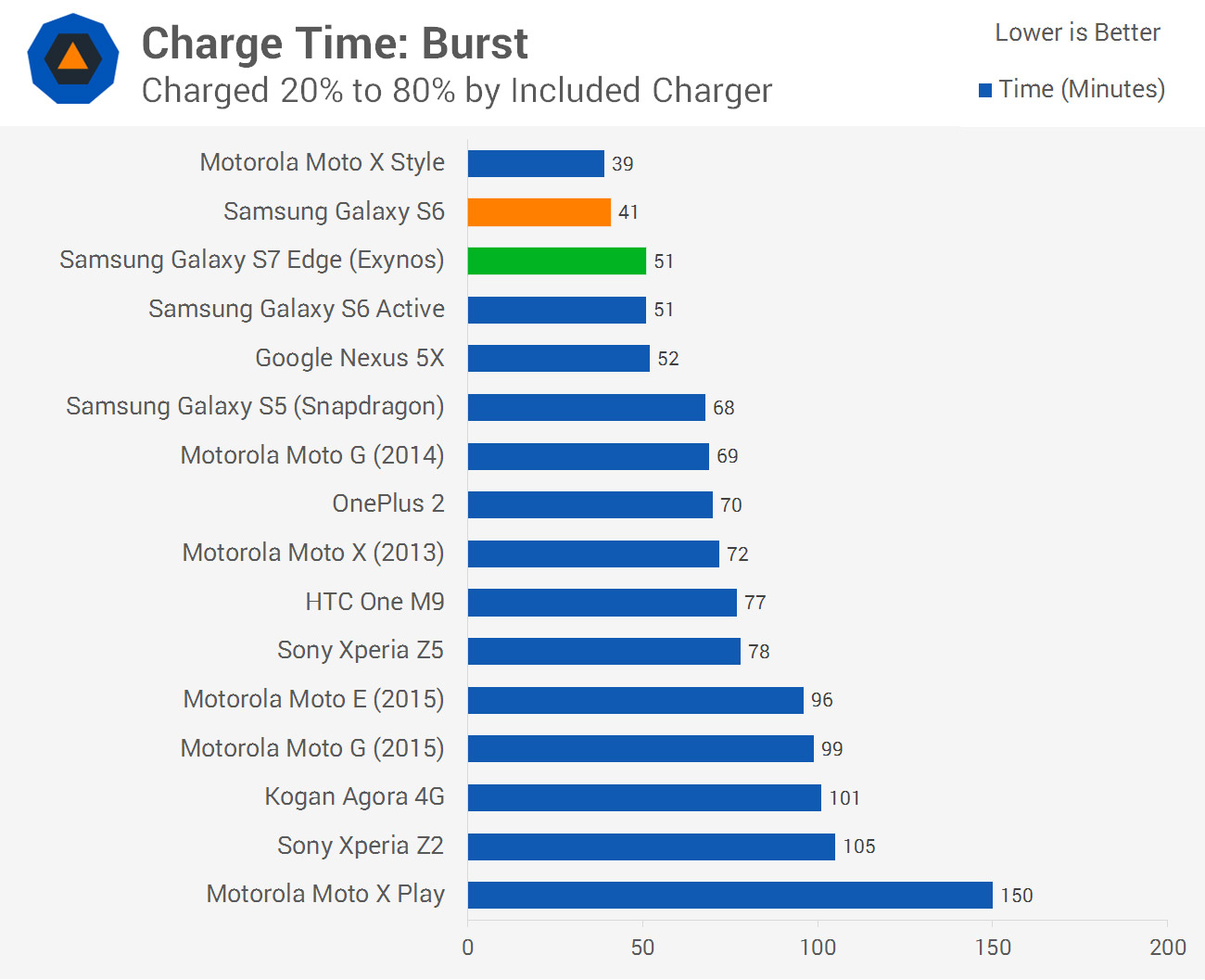
It shouldn't come as a surprise that the Galaxy S7 Edge charges extremely fast over a wired connection, even with the Exynos model.
